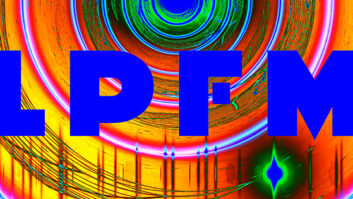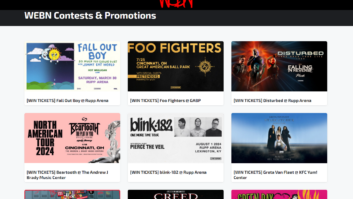Originally published June 3
LAS VEGAS Commercial and noncom broadcast organizations that support HD Radio are getting onto the same page regarding a so-called “managed” voluntary FM digital power increase.
Commercial advocates of digital radio generally are ready for the change now while public radio is waiting for one more round of testing. But important voices on both sides support an increase and say they’re getting closer to working out the path.
Representatives of both continue to press the Federal Communications Commission for approval and hope for some kind of regulatory action by fall.
Attendees of the recent NAB Show heard pledges of cooperation and support for the increase from commercial and public radio entities.
Meanwhile, traffic data is growing in importance in the IBOC world, as more stations are investing in and earning ROI from this new resource.
Multiple portables
Engineering sources told Radio World they’ve been meeting with commission staff and believe the agency’s employees understand the need for speedy approval of the power increase.
These sources also expect portable devices with HD Radio capabilities — such as MP3 players, cell phones and iPod accessories — to be available by the holidays.
IBiquity President/CEO Bob Struble concurs with both of those assessments; he told Radio World he thinks the market will see “multiple HD Radio portables at retail” this fall.
Indeed, iBiquity showed a prototype KRI portable armband HD Radio receiver in its booth. Struble described the diversity antennas in the product as a “breakthrough.” The wire to the earbuds constitutes one antenna while another is embedded in the unit. The design was optimized in the iBiquity lab in Columbia, Md. The dual-antenna design boosts received signal strength, he said.
Advocates for a power hike say initial FM power levels for IBOC were set low to avoid interference to neighboring stations and/or self-interference to host analog signals. Now, they say, receivers on the market are having trouble picking up the digital signal in certain conditions.
With portables coming to market this year, a power increase is vital, according to Milford Smith, vice president of radio engineering for Greater Media and chairman of the National Radio Systems Committee.
In portables, he said, “The antenna has to be small. It’s less efficient and performs less well.”
Exploring options
Paul Brenner, president of the Broadcast Traffic Consortium and senior vice president and chief technology officer of Emmis Communications, said automakers and portable device makers with whom he’s spoken assume an HD Radio power increase will be approved.
“If it doesn’t happen, they will turn towards broadband and other technologies” to deliver content.
In their initial filing last year advocating an increase, 18 broadcast organizations, mostly from commercial radio, urged quick action on an increase. IBiquity Broadcast Business Development Manager Jeff Detweiler reiterated this stance during an engineering session at the NAB Show.
One possible scenario, he said, is that commercial stations may raise power first while iBiquity continues to work with non-commercial stations on the best way to increase digital coverage.
Struble put it this way: “We’re exploring options” on the power level increase. “In no way do we want to leave non-coms behind.”
An angle on this story is the focus on stations’ city-grade contours. NPR wants member stations to be able to increase digital FM power yet it also seeks to protect analog coverage just outside city grade contours, where donors often live. Thus it is seeking protection for the analog further out than commercial radio.
Testing update
NPR Labs has received funding from the Corporation for Public Broadcasting to complete more tests related to the power level increase (see “Unified Theory: HD-R Power Tests Begin” in the May 6 issue). Commercial stations and iBiquity, while not providing funding for these tests, have offered resources such as stations and/or personnel. NPR’s specific needs weren’t nailed down just after the show.
NPR has lab testing underway and plans soon to begin field testing related to indoor coverage, mobile interference and mobile impairment, host compatibility and SCA field receiver coverage. It plans to include information in its reports, expected to be finalized this fall, about other ways to increase coverage without increasing the digital transmitted power, such as employing asymmetrical IBOC sidebands, single-frequency networks and IBOC directional transmission.
One commercial radio engineer told Radio World that several of these options are “not there” yet; asymmetrical sideband use in particular may pose a problem because without it a digital signal loses some robustness and error correction.
“These are intended to be the last studies on the subject of what is a reasonable answer to managing IBOC,” said Mike Starling, NPR vice president/chief technology officer and executive director of NPR Labs.
Within NPR Labs, John Kean and Ellyn Sheffield are spearheading some of the testing.
NPR has a slate of technical representatives from commercial organizations and iBiquity plans to consult. Among those providing input are Brian Kroger, Ashruf El-Dinary and Jeff Detweiler of iBiquity; Jeff Littlejohn of Clear Channel; Milford Smith of Greater Media; Glynn Walden of CBS Radio; Dave Wilson of the Consumer Electronics Association; and Doug Vernier of V-Soft acting as representative of CPB.
Peer review stations for NPR testing include member stations from American Public Media and Minnesota Public Radio, and others on which we’ve reported.












